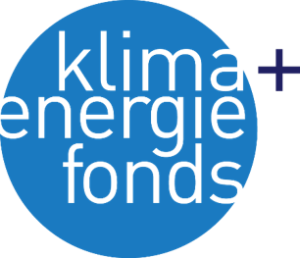AAR2
___________________________________________________
In 2014, the first comprehensive National Assessment Report (AAR14) was published. Since its publication, many things have changed. Therefore, the second Assessment Report on Climate Change for Austria (AAR2) is currently being prepared.
Click here to access the current review.
The aim of the AAR2 is to assess the state of knowledge on climate change in Austria and its consequences, as well as to identify mitigation potentials and strategies, adaptation options and transformation pathways. Gaps in knowledge are to be closed in the sense of a climate-neutral society. The report is to be published in summer 2025. The project is based on the processes of the Intergovernmental Panel on Climate Change (IPCC) and is relevant for the implementation of the 13 SDG targets.
The AAR2 Co-Chairs Daniel Huppmann (IIASA), Margreth Keiler (UIBK), Keywan Riahi (IIASA), Harald Rieder (BOKU) are coordinating the extensive project and will work together with more than 120 scientists on the new, comprehensive climate report for Austria over the next three years.
Structure of the AAR2:

Detailed chapter description:
Chapter 1: Physical and Ecological Manifestation of Climate Change in Austria
Chapter 1 lays the groundwork for describing the physical and ecological manifestation of climate change and its impacts in Austria. It illustrates our knowledge about the processes and drivers that determine the past and future climate and the spheres that are impacted by it: Atmosphere, Cryosphere, Hydrosphere, Pedosphere, Lithosphere, and BiosphereChapter 2: Climate Change, Land Use, Ecosystem Services, and Health
Chapter 2 focuses on the nexus between climate change, land use, ecosystem services, and health. The chapter first describes the impact of climate change on terrestrial ecosystem services, discussing effects on provisioning, regulating, and cultural services. Furthermore, it assesses avoid-shift-improve strategies in the land system, to mitigate and adapt to climate change. These include reduction in demand and supply, shifting towards healthy plant-based diets, improving agricultural and forestry management, and enhancing the carbon sink of ecosystems. Lastly, the chapter addresses conflicts and enabling conditions associated with these efforts.Chapter 3: Built Environments and Mobility
Density and urban connectivity cut carbon, sometimes leading to important tradeoffs with urban heat island effects, access to greenspaces, and existing norms. Smart urban planning, in turn, helps avoid emissions lock-in, while electrification of both buildings and transport provides a crucial lever to cut emissions, especially when combined with further decarbonization of the electric grid. Given the low renovation rates and long lifespan of buildings, additional pricing and regulatory policies that incentivize emission reductions are essential for achieving the climate targets.Chapter 4: Provision of Goods and Services in a Climate-Resilient Economy via Materials, Labour, and Energy
This chapter is based on the idea of the economy as a „Provisioning System“: To ultimately foster wellbeing, goods and services are provided to meet diverse final demands, such as energy or material services. These goods and services come with a certain resource demand (for material supply, energy supply and labor supply). The provisioning system is both the source of greenhouse gas emissions and impacted by climate and global change, experiencing opportunities and challenges for climate mitigation and adaptation.Chapter 5: Navigating Demand-side Transformations towards Net-zero
Chapter 5 focuses on behavioral and decision-making processes of individuals in their various roles as citizens, households, firms and communities related to mitigation and adaptation. Starting from the current set of infrastructures and technologies, legal frameworks, social norms and values, the chapter assesses the scope for changing decision-making processes towards a net-zero transformation. Social and political acceptability are key issues for the feasibility of such a transformation and are analyzed together with processes at the aggregate level, such as social tipping points.Chapter 6: Climate Governance: Political, Legal, Economic, and Societal Aspects
Chapter 6 assesses political, legal, economic and societal aspects of climate governance adopting an interdisciplinary perspective. It starts with an assessment of the legal framework and the international commitments for Austrian climate policy. This is followed by an assessment of the role of institutions and actors and how power shapes the conditions of and processes of climate governance. Subsequently, the chapter provides an integrated assessment of existing policy instruments for mitigation and adaptation as well as an assessment of the legal remedies of climate liability by presenting selected climate lawsuits. Budgetary and finance aspects as well as investment requirementsChapter 7: The Austrian Alps as a Multi-Dimensional Focal Area
Chapter 7 provides an assessment of the manifestation of climate change in the Austrian mountains, focusing on the Austrian Alps, and its impact on the water cycle, extreme events, biodiversity, protected areas, settlements, demography, as well as economic sectors including agriculture, energy, tourism, and mobility. The chapter funnels down on specific needs for adaptation and mitigation for a climate-resilient society and identifies the pathways for effective implementation. The chapter concludes with key risks identifying the most important barriers and enablers of transformation towards climate neutrality in this significant and sensitive region.Chapter 8: Transformation Pathways
Building upon the groundwork laid in earlier chapters of the AAR2, Chapter 8 performs an assessment of proposed mitigation options and scenarios according to (a) two qualitative lenses – the “efficiently-more” and “sufficiently-less” perspective – and (b) the SDGs. The assessment of scenarios involves a comprehensive scrutiny and comparison of crucial parameters and the macroeconomic implications of holistic and sector-specific scenarios. Finally, to outline qualitative Austrian transformation pathways, the proposed mitigation options and scenarios are assessed for their plausibility by embedding them into a wider political economy context.
If you are interested or have any questions, please contact: aar2-tsu@list.boku.ac.at
This project is funded by the Climate and Energy Fund as part of the 14th Austrian Climate Research Programme.
Participating institutions
Funding agency







